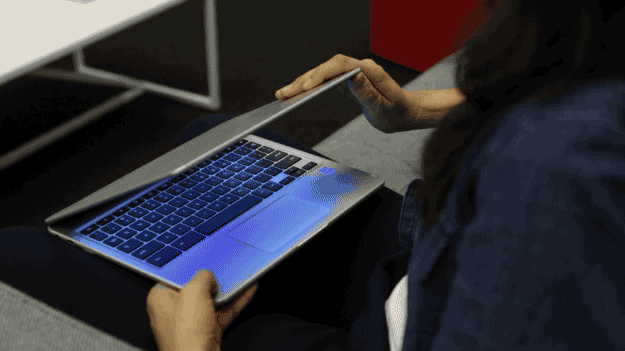Google goes after Microsoft’s Surface Pro and Apple’s iPad Pro with its new premium Samsung Chromebook Pro and Plus laptop-tablet hybrids.

It’s a laptop! It’s a tablet! It has a stylus! You can fold it backwards! You can draw on it! The Samsung Chromebook Pro and Plus aren’t your kid brother’s classroom Chromebooks. Google is adding new premium options to its low-cost laptop line: two Samsung-branded hybrid computer-tablets (what gadget p33ps call “convertibles”) with styluses built-in.
The devices are clearly aimed at customers who are interested in Microsoft's Surface Pro (between $699-$1,049) or Apple's iPad Pro tablets ($599-$929), but who aren’t keen on those products’ hefty price tags. The Chromebook Pro is now Google’s most high-end Chromebook offering — and it costs just $549, while the Chromebook Plus is priced at $449.
What’s unique about the devices aren’t just that they’re ~fancier~ than Chromebooks past – it’s that the laptops can run Android apps for phones and tablets. All of them. Google is hoping that opening its Chromebooks to the over two million touchscreen-friendly games and mobile apps available in its Play Store will give its lightweight laptops even more of an edge over other devices.
I’ve been letting my MacBook Air collect dust for two weeks while testing out a pre-production version of the new Chromebook Pro, the faster and more powerful of the two. It's available at the end of April with no specific release date set. I found the Pro to be impressively versatile. It was sufficient at most of my work computer tasks (namely messaging my boss, writing reviews like this one, and reading articles). The other bells and whistles, like the stylus and touchscreen, were non-essential, but worked well when I needed them.
Samsung / Buzzfeed News
If you’re already familiar, just jump to the next section.
Chromebooks are breathtakingly cheap computers. I once bought two mascaras and a foundation at Sephora and it was more expensive than the cheapest Chromebook you can get at Best Buy.
But you get what you pay for. They’re simple machines that can handle a lot of things, like responding to email, scrolling through Facebook, watching YouTube videos, streaming Netflix, word processing, and reading articles. Chromebooks need a strong Wi-Fi connection, and, while you can still use Google Docs, watch some Netflix shows, and listen to Spotify offline, there’s isn’t a ton of functionality for people who don’t have access to reliable Internet.
Chromebooks are the conceptual opposite of Android phones, which have, historically, been more appealing to tinkerers and gadget geeks. Chromebooks, on the other hand, are grab-and-go machines designed for people who know how to surf the web, but don’t consider themselves techies.
The laptops are dead simple. To start using one, all you need is a Google account. The devices are less susceptible to malware than others, and benefit from automatic security updates every six weeks. They’re a good fit for a lot of people. Chromebooks outsold Macs for the first time in 2016, with over half of that market going to the education sector. Over 20 million students now use Chromebooks in classrooms worldwide.
But they’re not for everyone.
Processors typically aren’t very good in Chromebooks. Gamers and extreme multi-taskers will find that the computers become slow and unusable under a heavy load. People who prefer to optimize their digital workspace with apps like F.lux and BetterSnapTool might find the cookie cutter Chrome environment too limiting. Lastly, and most importantly, Chromebooks can’t do most photo and video editing. You can do lightweight stuff (adjust brightness, draw on photos, and add filters, etc.) but Chromebooks can’t run Photoshop CC or Premiere CC.
First of all, the new Samsung Chromebook Pro can do this:

Nicole Nguyen / BuzzFeed News
from BuzzFeed - Tech https://www.buzzfeed.com/nicolenguyen/this-fancy-chromebook-has-a-touchscreen-stylus-and-a-price-y?utm_term=4ldqpia
No comments:
Post a Comment